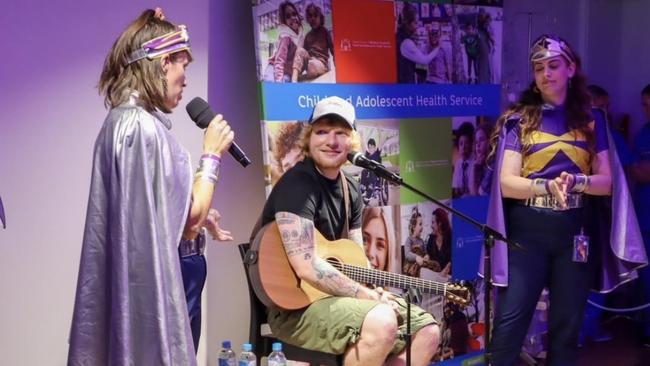From marketer to CEO: Starlight’s boss on for-purpose brand building
Over the past two decades, marketing and storytelling for impact has played a critical role in Starlight’s growth, the organisation’s chief executive Louise Baxter said.

Louise Baxter is chief executive of Starlight Children’s Foundation, but she describes herself, first and foremost, as a marketer.
As she marks two decades at the not-for-profit, Ms Baxter has delivered growth on many fronts, from brand building to the bottom line. Under her leadership, Starlight’s revenue has grown from less than $10m to $46m.
Of her time at the organisation, Ms Baxter has spent 13 years at Starlight’s helm, steering it through the post-global financial crisis environment as well as the Covid-19 pandemic.
In other measures of success, when she originally joined, Starlight had created 120,000 “positive experiences” for seriously ill children. This number now sits at 1.3 million. The organisation’s staff headcount has also risen during that time, from 65 to 350.
Speaking to The Growth Agenda, Ms Baxter said creativity in purpose-led marketing had been key to the foundation’s success.
Prior to Starlight, Ms Baxter worked in marketing and advertising for 20 years on the brand side for the likes of Arnott’s, Accor and Johnson & Johnson. She also spent nearly a decade at advertising agency Leo Burnett as a director, and upon moving into the not-for-profit sector, brought her brand-led thinking with her.
“I think like a marketer and we have three year strategic plans and we always have themes. There’s always a way to bring those things to life. And it’s in reach and frequency. Because, with your team, I always say when you’re sick of hearing a message as a leader, some are only hearing it for the first time,” Ms Baxter said.
“Consistency and repetition is really important. And if you change message, you lose people. From my perspective, I think that’s really important. All successful businesses must have successful marketing.”
Starlight has just concluded its Super Swim initiative on February 28, which raised $5m and reflects tenfold growth since it was first started five years ago.
This year attracted more than 13,700 participants who took on a swimming challenge to raise the money, which will help 130,000 sick children.

As with many of Starlight’s initiatives, it highlighted stories of how the organisation has helped support children in hospital – including personal anecdotes from ambassadors such as former Olympic gold medallist swimmer Brooke Hanson.
In supporting this campaign, Ms Hanson spoke of how Starlight supported her through extremely tough days in hospital.
“Whether it’s just a hand on your shoulder to say ‘it’s OK’ or having a cup of tea in the Starlight Express Room, it really makes a difference and I’ve witnessed it first hand,” she said.
Awareness and engagement for the fundraiser was driven through a range of channels including offline media such as radio and TV, as well as public relations activities including ambassadors, influencers and support from swimwear company Speedo.
It also ran a paid digital acquisition campaign through Facebook, Instagram and YouTube. This year, it introduced a dedicated Instagram page for the Super Swim, which has been used as a key channel for storytelling and attracting participants.
Ms Baxter said all channels supported each other but when it came to attribution, paid social channels drove the highest conversation rates for participation.
The organisation often references the number of “positive experiences” delivered to children, which are central to Starlight’s mission and message. These are delivered to children through a range of initiatives, including the Starlight Express Rooms, which are dedicated medical-free zones situated in major children’s hospitals across the country.

The organisation has also extended its reach to more than 140 remote Indigenous communities in recent years. It has also taken its support for seriously ill children online via a social and content-led platform called Livewire, which was designed to support and connect isolated 12 to 20 year-olds living with illness or disabilities. Through sharing experiences via a moderated chat, it aims to help teens experience moments of joy and a sense of community.
“You have to recognise your target market, and you have to stay ahead of the curve there,” said Ms Baxter. “Young people don’t stand still and have the same idea for any amount of time. So we really need to be on our toes and be staying ahead of that, because we need to be continuously supportive and relevant to these children and young people when they need it most.”
Storytelling is a key part of Starlight’s initiatives, and its branding also reflects this approach. “Our logo is our Starlight story,” said Ms Baxter of the design featuring a child reaching for a star in a dark sky to illustrate Starlight’s mission to brighten the lives of children.
“That’s us. That’s what we do every day,” she said. “Stories engage and connect people. And we have so many remarkable stories.”
These include stories of personal connections made with Starlight kids and families who began their journey more than 20 years ago, including now adults Nathan Cavaleri and Dylan Allcott.
Brand building has been a focus for Ms Baxer from the beginning of her Starlight tenure. When she first joined as head of partnerships in 2001, she led a team delivering 130 per cent revenue growth at the time.
Reflecting on what has enabled the organisation’s success to date, Ms Baxter draws a clear connection between communication, marketing and storytelling and Starlight’s upward growth trajectory both on and off paper.
“We’re just completely driven by that focus on purpose,” she said. “Every organisation has to have clarity around what their purpose is, and it’s not just our sector that has to have purpose. And however you interpret that, and translate that and communicate that, so that your team is aligned to that and engaged with that, is incredibly important for any business,” she said.
“Because if you don’t have people aligned and engaged, people pull your organisation in different directions, then you’re never going to be efficient.”
The organisation’s efforts to connect stakeholders to its purpose has resulted in strong brand recognition and differentiation – Starlight was named Most Reputable Children’s Charity in Reptrak’s 2021 Charity Reputation Index.
“Often the perception in the for purpose sector is, it is a step into the slow lane. This could not be further from the truth,” Ms Baxter said.
“Business acumen is everything in this sector. We need to be smart with our resources, be more efficient and constantly innovative. I describe it as eternal start-up mode, and I love this about our sector.”






